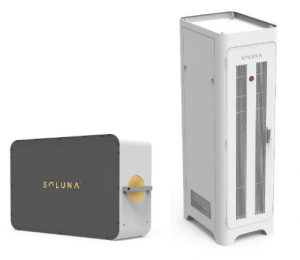
PERTH, AUSTRALIA: Lithium Australia NL has completed the formalities for joint battery marketing operations with the DLG Group, China-based battery and energy storage specialists.
The new enterprise –an incorporated joint venture (Lithium Australia 50% and DLG 50%) trading as Soluna Australia Pty Ltd has been established to sell lithium-ion batteries (LIBs) and Soluna energy storage products into the rapidly expanding Australian renewables energy market.
A detailed investigation of the Australian energy-storage industry identified serious supply-chain constraintsinthe delivery of LIBs to Australian customers.
Soluna Australia intends to provide a new and reliable supply source for renewable energy solutions to power users in Australia. With the Australian renewable energy sector experiencing strong growth, the Australian Council of Learned Academics estimates that 16 GWh of energy storage will be required by 2030 to ensure security of electricity supply for the medium forecast rate of uptake of renewable energy.
That will necessitate investment of more than $5 billion in energy-storage solutions in the next 10 years, with LIBs forming a significant proportion of that.
Under the Lithium Australia/DLG agreement, the parties will facilitate technological cooperation between VSPC Ltd and DLG for both cathode and battery R&D. DLG will work with Lithium Australia to further develop VSPC’s cathode powders, initially with a focus on lithium-ferro-phosphate (LFP) LIBs, LFP being the ideal battery chemistry for Australian energy-storage applications.
Soluna is the registered brand of trademark of DLG Energy. Soluna products are sold in Europe and the US, with sales expanding worldwide. Soluna Australia has now received the first commercial shipment of Soluna energy products into Melbourne, Victoria.
Comment from Lithium Australia MD Adrian Griffin: “Formalisation of Lithium Australia’s joint venture with DLG, which resulted in the creation of Soluna Australia, paves the way for the introduction of superior energy-storage products into the Australian market, reducing the carbon footprint of national energy consumption for both residential and industrial consumers. We foresee great potential for energy storage in fringe-of-grid and off-grid applications, as well as improvements in the utilisation of power from existing grids”.